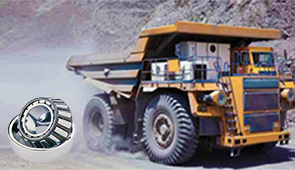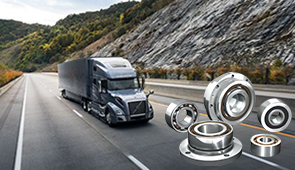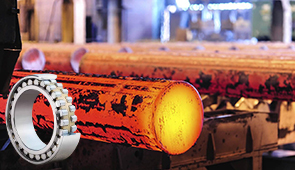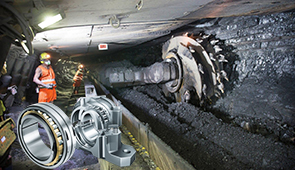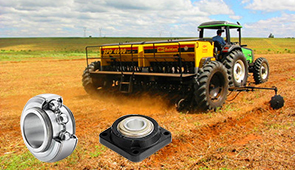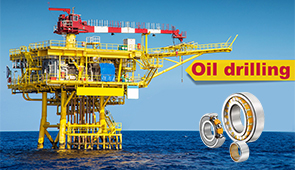Grease vs. Oil: The Ultimate Guide to Understanding the Difference Between Lubricants and Grease
Lubrication plays a critical role in the performance and durability of mechanical systems, and selecting the right type of lubricant is essential for optimal functionality. Whether it’s the smooth operation of an industrial machine or the longevity of a car engine, the debate of grease versus oil is a fundamental consideration in maintenance and engineering disciplines. This guide aims to provide a comprehensive framework for understanding the key differences between grease and oil, their unique properties, and their respective applications. By exploring the composition, functionality, advantages, and limitations of each, this article will equip readers with the knowledge needed to make informed decisions tailored to specific operational requirements.
What is the main difference between grease and oil?
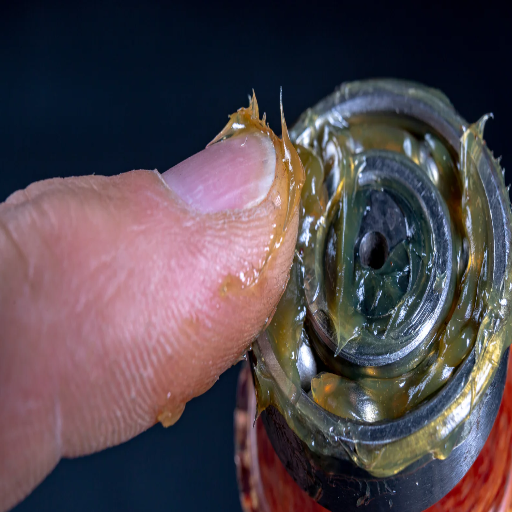
How does the consistency of grease differ from oil?
From a technical perspective, oil and grease primarily differ in their states and viscosities. A semi-solid lubricant grease has higher viscosity and firmer structures compared to oil thickened with soap or a complexing agent. Grease preserves the liquid oil in an ideal location where it will not be displaced. Liquid oils, in contrast, are lower in viscosity, enabling easier flow in dynamic systems.
- NLGI Classification for Grease: Grease consistency classification is done using the NLGI scale which ranges from 000 to 6, with 000 resembling a fluid and 6 a solid. The largest demographic in common use frequencies falls between NLGI 1 and 3.
- Viscosity for Oil: Oil consistency is primarily defined by its kinematic viscosity, which is measured in centistokes (cSt) at predetermined temperatures, such as 40°C or 100°C. Oil also spans from low to high, with low viscosity options being for faster operational tasks while higher viscous oils are utilized for heavier duty work.
These distinctions are directly correlated with their appropriateness for particular applications. The thick consistency of grease is optimal for use in low-speed or sealed mechanisms with long operational periods, and where stickiness is essential. Whereas, oil is used more commonly in high-speed machines due to its ability to flow easily and reduce friction and heat.
What role does a thickener play in grease composition?
In the formulation of grease, thickeners are crucial in both determining the formulation and the physical properties of the grease because they are the structural framework containing the base oil and additives in ‘suspension’ leading to semi-solid form. The thickener works like a sponge that allows lubricant to keep its shape under different working conditions while enables oil to be used as needed for lubrication. Common Metallic Soap thickeners that are used include lithium, calcium, and aluminum soap, while other complex soaps and non-soap thickeners like polyurea also exist.
- Operating Temperature Range: Polyurea grease has a much higher maximum working temperature, up to 180°C, while lithium greases operate well in the -25°C to 120°C range.
- Water Resistance: Calcium-type thickeners have great water-resistance properties, which make them useful for marine applications.
- Shear Stability: High-performance Complex soap thickeners possess high mechanical stability for use at high loads or shear forces.
Taking these factors into consideration, choosing the appropriate thickener will guarantee that the grease performs best in the desired application.
How do the lubricating properties of grease and oil compare?
The efficiency of grease and oil as lubricants is application-specific since both have their advantages.
- Viscosity and Flow: Due to lower viscosity, oil can flow freely and lubricate moving parts in high-speed and precision systems. Grease has a semi-solid consistency, which is better suited for applications needing long-term lubrication or where re-lubrication presents a challenge.
- Operating Environments: In systems with higher temperatures, oil performs better because it circulates and dissipates heat. Grease however performs better in contaminated environment, such as those susceptible to dust or water, due to its sealing capabilities.
- Load Carrying Capacity: Often found in thickened and loaded grease, thickeners and other additives give grease better load bearing properties, making it appropriable for heavy duty equipment or slow moving parts. Dynamic systems that need agile operation with minimum frictional losses are better suited for oil lubrication.
- Maintenance Requirements: Compared to grease, oil needs to be monitored and replaced more frequently. Grease in most cases lasts longer than oil which reduces maintenance intervals.
Taking these factors into consideration allows selection of lubricant systems easier based on the operational demands and limitations of the system. As both oil and grease possess varying qualities, the selection of one becomes particular to the application.
When should you use grease instead of oil for lubrication?
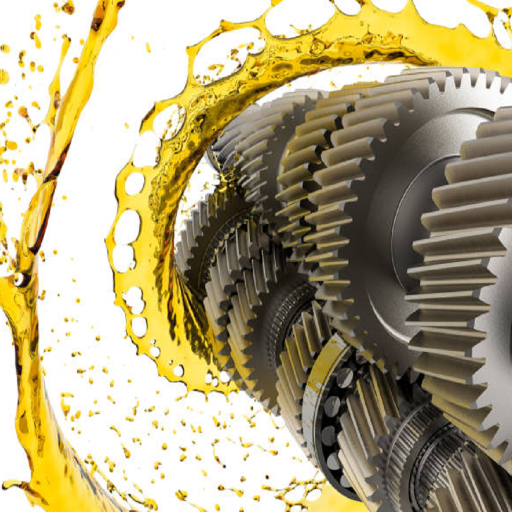
What are the advantages of using grease over oil?
The merits of using grease over oil originate from its structural characteristics and suitability for certain occupational settings. These include:
- Absorption Ability: In addition to lubrication, grease enhances the sealing of every equipment surface, blocking the entrance of dust, dirt, water, and other destructive materials, which is essential for the longevity of such machinery.
- Load Carrying Capacity: Grease containing thickener and additives usually possesses a greater load bearing capacity, which increases its utility for heavy-duty applications such as bearings or slow-moving components.
- Less Trouble with Maintenance: Due to the slower replenishment or poor monitoring grease requires compared to oil, there is less maintenance performed which results in lower expenses.
- Retention in Vertical or Enclosed Systems: Because grease is less likely to leak, it adheres to the desired area and remains there even in systems that are vertically or inclined, which guarantees continuous lubrication.
- Thermal Stability and Resistance: Guarantees optimal performance in both high and low temperature applications, where oil is likely to degrade or cause flow issues.
About these technical requirements, grease is recommended for situations when contamination threats, environmental extremes, increased load requirements, and poor access to maintenance points are important.
In which applications is grease preferred over oil?
In systems with infrequent or difficult maintenance, I would prefer grease because its semi-solid state ensures that lubrication is longer-lasting and does not require frequent reapplication.
Also, grease is at its best in systems with high contamination potential, such as dirt and moisture-laden machinery and open gears. Grease is superior in these cases because it creates a protective seal from contaminants.
In the case of high-load or shock-load conditions, I would recommend grease because I know it will not fail due to its superior film strength. It is also beneficial when protection from extreme temperatures is involved because grease stays in place and keeps operating, unlike oil, which degrades in extreme situations.
With these advanced features—reduced need for maintenance, contamination resistance, load bearing capacity, and thermal resistance, it makes these applications, indeed, very demanding, and explains the justification to use grease.
How does grease perform in high-speed applications compared to oil?
Oil and grease, for instance, have the ability to reduce friction and wear, however, grease has the added advantage of exhibiting higher resistance to centrifugal forces. Grease’s resistance allows it to remain at fixed places even during elevated rotational speeds, thus minimizing the risk of lubricant leakage. Grease, however, incurs some amount of drag due to its semi-solid composition, which in very high speeds can impact energy efficiency.
- Centrifugal Force Resistance: Grease’s ability to adhere to other components means lower displacement of lubricants at higher speeds.
- Leakage Prevention: A semi-solid character aids in the containment of greases, unlike oils, which are prone to escaping at higher speeds.
- Thermal Management: Provides stability in temperature for greases, allowing for consistent performance levels without rapid degradation.
- Drag Effect: Resistance to flow in grease being higher than that while in a semi-solid state is likely to be detrimental to efficiency, which means careful precision must be applied.
Factors surrounding high-speed applications must not be taken lightly, as they impact the stable lubrication delivery of grease.
Are cooking oils and lubricating oils the same?
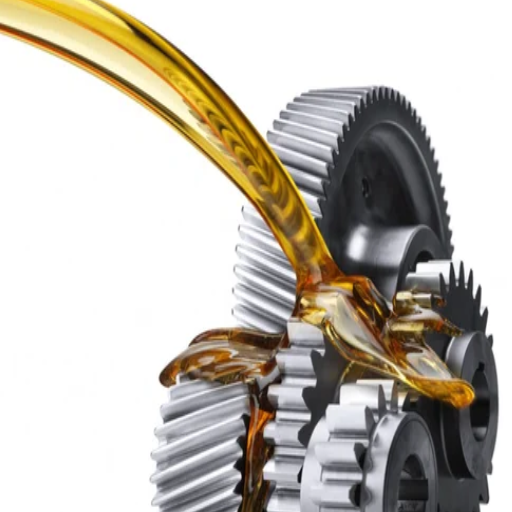
What are the key differences between cooking and lubricating oils?
The fundamental distinctions between cooking oils and lubricating oils rest in their composition, intended use, and general performance qualities.
Their principal technical requirements contain smoke point, which specifies the maximum temperature at which breaks down and begins to burn, and fatty acid composition which affects the nutritional value and stability of the oil when heated during cooking.
In contrast, oils meant for lubricating machines are made chiefly from mineral oils or synthetic bases, or a mixture of both, and are crucial to machinery and component functionality. The most vital technical features of such oils are viscosity, which determines the oil flow under varying temperatures, thermal stability concerning high-temperature endurance, and the extent of antiwear and detergent additives, which increase the oil’s effectiveness.
While both oils deal with controlling the behavior of fluids, their applications both differ, so the oils are designed with specific properties. Cooking oils center on safety, flavor, and nutrition, while the latter focuses on protecting the machine and the effectiveness of its operations.
Can cooking oils be used as lubricants in machinery?
While cooking oils can be employed as lubricants in some cases, their chemical and physical peculiarlities make them unfit for most machinery applications. The primary constituents of cooking oils are triglycerides which, aside from having a limited oxidative stability, tend to have lower thermal tolerance and high temperatures destabilize and polymerize them. This negatively affects the cooking oil’s efficacy, leading to residue buildup and reduced efficiency in mechanical systems.
- Viscosity Index: Compared to other forms of lubricants, like synthetic or mineral oils, cooking oils have a lower viscosity index, resulting in issues with variable temperatures.
- Thermal Stability: When subjected to high temperatures, cooking oil degenerates, forming gum and sludge, which can be harmful to machinery.
- Oxidation Resistance: Oxidation resistance that is not too great can lead to shorter functional lifespans and problematic corrosive by-products.
- Additive Absence: Anti-wear, anti-corrosion, and extreme pressure additives that make lubricants specialized are absent in cooking oils. This renders cooking oils unfit for heavy duty and precision machinery.
Although utiliszed in low-load and low-temperature settings, cooking oils can serve short-term emergency solutions, but the risk of inefficiency and damage in the long term far outweighs the benefits. For long machinery life, always utilize a lubricant that corresponds with the operational parameters of the machine.
What are food-grade lubricants, and when should they be used?
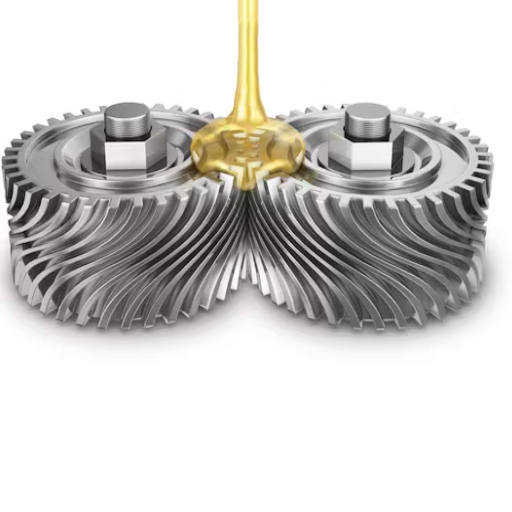
How are food-grade lubricants different from regular lubricants?
Unlike typical lubricant products, food-grade lubricants differ from the rest in their formulation, use, and the industry standards they adhere to. Arguably, the formulation is what sets these products apart, resulting in materials that can come into contact with food and drinks without posing any safety concerns.
- Toxicity: As opposed to typical lubricants, food-grade lubricants have zero toxicity or biodegradability which makes them safe in situations where food contact is accidental. Typical lubricants contain toxic, harmful additives which by all means enables them to be used in such situations.
- Additive Composition: Regular lubricants may contain banned heavy metals, chlorine, and phosphorus compounds, which food-grade products do not have, whereas food-grade products use polyalphaolefins (PAO), esters, and synthetic hydrocarbons, which are safe to be used.
- Thermal Stability: Compared to industrial lubricants, food-grade lubricants have lower operating high temperature thermal stability, however, they are still designed to provide sufficient levels. The range them operate in is the same at -20°F to 400°F, depending on the formulation.
- Water Resistance: Just like the rest of food-grade lubricants, some are also able to endure wash downs in food processing bacause of their stronger water-repellent characteristics.
- Viscosity Range: The lubricants in this range are usually found in predetermined viscosity levels ready for use in conveyor belts, mixers, bearings, and other devices which are compatible with food industry machinery.
Food-grade lubricants offer protection against contamination in processes involving food, beverage, pharmaceuticals, and cosmetics manufacturing. These processes must use specialized lubricants to avoid contamination breaches and compliance issues, which regular lubricants would cause.
What are the safety considerations for using food-grade greases and oils?
While employing food-grade greases and oils, there are several matters of primary importance regarding safety that I must consider for compliance and operational integrity. First, I must verify that the lubricants are compliant with industry regulations like NSF H1 and ISO 21469, which guarantee food-grade lubricants for incidental food contact. Second, the lubricant must be non-toxic, insoluble, and free of harmful additives such as heavy metals, carcinogens, or allergens, which, if present, would contaminate the abused products.
- Thermal Stability: The grease or oil must be effective within the temperature range of -20ºC to 150ºC for effective functioning of machinery. An example is during food production, steady performance within these parameters is critical.
- Viscosity Ratings: Ensuring that the appropriate viscosity grade is used so as to not excessively wear the equipment while also meeting the operational loads requires clever foresight.
- Water Resistance: The lubricant must have strong resistance to moisture and washout in wet processing or high-humidity environments.
- Anti-Wear Properties: Employing lubricants with high load-bearing capabilities, such as those that pass the standard ASTM D4172 wear tests, aids in the reduction of mechanical fatigue and thus prolongs the equipment’s life.
- Compatibility: On my part, it is important to verify that the lubricant has no negative interactions with seals, gaskets, or any materials in the system, which could cause deterioration or malfunction to occur.
Ultimately, incorporating these measures ensures that I uphold food safety, equipment functionality, and compliance with applicable laws during the operational workflow.
How do you choose between oil and grease for bearing lubrication?
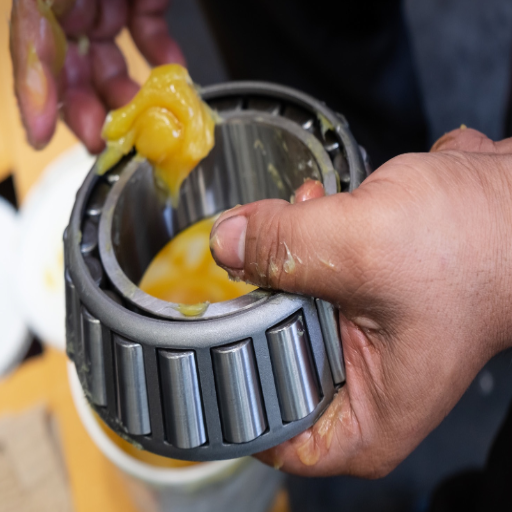
What factors determine whether to use oil or grease in bearings?
When it comes to deciding between oil or grease for bearing lubrication, I tend to choose both oil and grease depending on different technical and operational aspects to ensure maximum efficiency and lifespan of the machinery:
- Operating Speed: Most oil lubricated bearings used in high speed operations tend to run on oil since it alleviates friction and subsequently shunts out heat. In contrary, grease is better suited for low-speed operations as it can lubricate frequently over longer time spans without needing to be replenished regularly.
- Operating Temperature: Oil is without a question the best solution for high temperature environments, due to its superior cooling and thermal stability. Moderate temperatures may allow use of greases depending on the base oil and thickener type of the grease (i.e. lithium complex grease rated for roughly up to 250°F/120°C).
- Load Condition: Grease does well under heavy loads as it tends to yield the cushioning effect due to holding so much grease in the bearing. Those conditions are well suited for greases with a high-viscosity base oil (ISO VG 150 and higher) with extreme pressure (EP) additives.
- Contamination Risk: Grease has the advantage of sealing bearing for water or dust ingress in the bearing retainer. Oil systems require much more effort in ensuring grease contamination.
- Maintenance Specifications: Oil lubrication systems need constant observation and use centralized circulation systems, whereas grease is easier to work with because of its long re-lubrication interval, making it useful for hard-to-access bearings.
- Design Consideration: Bearings that have shields or seals prefitted usually have grease put in during the assembling process, while bearings that come without shields or seals tend to have oil, especially those in splash or circulation systems.
Taking these factors into consideration together with the particular application needs, I can create a decision to use either grease or oil while ensuring dependable bearing operation.
How does temperature affect the choice between oil and grease?
Barriers of high oil and grease viscosity make it exceptionally difficult for any high oil body temperature to achieve lubrication. Oil is preferred at high temperatures of operation owing to its superior thermal stability and short-term fluidity to guarantee continuous lubrication. For instance, higher temperature oils often have VIs of 150 or greater coupled with a vF of 200 °C and more ensuring sustained reliability in demanding conditions.
Greases, on the other hand, are more suitable for low to moderate temperature applications due to the need for a semi-solid body that stays in place while providing lubrication. Particular kinds of greases can be applied to support elevated temperatures by thickening the grease with polyurea or lithium complex, providing an operational temperature of up to 200 °C or more. Grease’s dropping point temperature defines a maximum temperature the grease can be used at before the oil desires, with the commonly granted value of 30-50°C above standard operating temperatures.
Moreover, low temperature conditions have an influence on the choice due to the increase in viscosity and hardening of the grease. For cold conditions, PAO (polyalphaolefins) synthetic based low viscosity oils or greases are recommended because of their low pour points and ability to remain effective at temperatures up to -50°C.
Minimizing the thermal problems within the application while addressing other specifications allows for the selection of oils or greases that guarantee optimal lubrication and reliability at different temperatures.
Frequently Asked Questions (FAQs)
Q: What is the main difference between oil and grease?
A: The main difference between oil and grease is their consistency and structure. Oil is a liquid lubricant, while grease is a semi-solid lubricant made from a base oil mixed with a thickening agent. Grease stays in place better, acting like a sponge that releases oil particles when needed, whereas oil flows more freely.
Q: How is grease made, and what are its components?
A: Grease is made by combining a base oil (typically 70-95%) with a thickening agent (5-30%) and additives (0-10%). The base oil provides lubrication while the thickener creates a fibrous network that holds the oil in place. Additives enhance performance characteristics such as oxidation resistance, anti-wear properties, and corrosion protection.
Q: Can you mix different greases?
A: It’s generally not recommended to mix different greases due to potential incompatibility issues. Mixing incompatible greases can lead to changes in consistency, reduced performance, or even equipment failure. Always check the compatibility of greases before mixing or switching types, and consult the manufacturer’s recommendations.
Q: What are the advantages of using grease over oil as a lubricant?
A: Grease offers several advantages over oil as a lubricant. It stays in place better, reducing leakage and providing longer-lasting lubrication. Grease also forms a better seal against contaminants, works well in vertical applications, and is easier to contain in certain mechanical systems. However, oils have better cooling properties and are more suitable for high-speed applications.
Q: Are there food-safe lubricants and greases?
A: Yes, there are food-safe lubricants and greases specifically designed for use in food-processing equipment. These products, often referred to as “food-grade” or “H1 lubricants,” are formulated to meet strict safety standards set by organizations like the NSF (National Sanitation Foundation). They are used when there’s a possibility of incidental food contact and are essential in maintaining food safety in processing facilities.
Q: What are some non-industrial uses for grease?
A: While grease is commonly associated with industrial applications, it has various non-industrial uses as well. These include lubricating household items like door hinges, bicycle chains, and garage door mechanisms. In the kitchen, food-safe greases are used for maintaining equipment like meat grinders or food processors.
Q: How do you choose between a lubricant and grease for a specific application?
A: Choosing between a lubricant and grease depends on several factors, including the operating conditions, speed, load, temperature, and environment. Grease works better in applications with slow to moderate speeds, heavy loads, and where leakage prevention is crucial. Oil is preferred for high-speed applications, where heat dissipation is important, or in systems that require continuous lubrication circulation.
UCTH213-40J-300 with Setscrew(inch)
CNSORDERNO: Normal-duty(2)
TOGN: UCTH213-40J-300
SDI: B-R1/8
SD: 2 1/2
UCTH212-39J-300 with Setscrew(inch)
CNSORDERNO: Normal-duty(2)
TOGN: UCTH212-39J-300
SDI: B-R1/8
SD: 2 7/16
UCTH212-38J-300 with Setscrew(inch)
CNSORDERNO: Normal-duty(2)
TOGN: UCTH212-38J-300
SDI: B-R1/8
SD: 2 3/8
UCTH212-36J-300 with Setscrew(inch)
CNSORDERNO: Normal-duty(2)
TOGN: UCTH212-36J-300
SDI: B-R1/8
SD: 2 1/4
UCTH211-35J-300 with Setscrew(inch)
CNSORDERNO: Normal-duty(2)
TOGN: UCTH211-35J-300
SDI: B-R1/8
SD: 2 3/16
UCTH211-34J-300 with Setscrew(inch)
CNSORDERNO: Normal-duty(2)
TOGN: UCTH211-34J-300
SDI: B-R1/8
SD: 2 1/8









